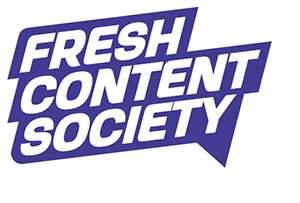Overview
The article delves into the effective implementation of brand-led campaigns through user-generated content (UGC) overlays. It highlights a crucial point: UGC significantly enhances authenticity and trust. This, in turn, leads to increased engagement and conversions. Consider this: statistics reveal that 84% of consumers trust UGC more than traditional advertising. Furthermore, companies leveraging UGC in their marketing strategies often experience substantial boosts in online performance.
Why is this important? In today’s digital landscape, where consumers are bombarded with advertisements, establishing trust is paramount. UGC not only fosters a sense of community but also encourages potential customers to engage with brands on a deeper level.
To implement UGC effectively, brands should focus on integrating authentic content into their campaigns. This can be achieved by:
- Encouraging customers to share their experiences
- Showcasing these contributions prominently
By doing so, brands can create a more relatable image that resonates with their audience.
In conclusion, embracing UGC is not just a trend; it’s a strategic move that can lead to remarkable results. Brands that prioritize user-generated content will not only enhance their credibility but also drive engagement and conversions. Are you ready to harness the power of UGC in your marketing strategy?
Introduction
User-generated content (UGC) has emerged as a pivotal force in the marketing landscape, fundamentally changing how brands connect with their audiences. By leveraging the authentic voices of consumers, companies can significantly enhance their credibility and cultivate deeper relationships with their customers. Yet, the challenge remains: how can businesses effectively integrate UGC into brand-led campaigns to maximize engagement and conversion rates?
This article explores the strategies and best practices for implementing UGC overlays in marketing campaigns. We will delve into the potential benefits of UGC and outline the essential steps to craft a compelling narrative that resonates with consumers.
As we navigate this dynamic terrain, consider this: how can your brand harness the power of UGC to not only engage but also convert? Let’s uncover the insights that will empower your marketing efforts.
Understand User-Generated Content (UGC) and Its Importance
User-Generated Content (UGC) encompasses any material created by consumers about a company, product, or service, including social media posts, reviews, testimonials, photos, and videos. This content is crucial for several reasons: it serves as social proof, enhances authenticity, and fosters a sense of community among consumers. By showcasing genuine experiences from real users, companies can build trust and credibility—elements that are essential for increasing engagement and conversions.
Consider this: studies reveal that 84% of consumers place greater trust in user-generated content than in traditional advertising. Companies that prominently feature UGC can experience a remarkable 29% increase in online conversions. Furthermore, UGC plays a significant role in influencing purchasing decisions, with research indicating that 90% of consumers are influenced by UGC when making choices.
Successful campaigns, such as GoPro’s Million Dollar Challenge, illustrate how effectively UGC can engage audiences and enhance visibility. Fresh Content Society’s innovative strategies have yielded impressive results, including over 6 million video views and a 20X return on ad spend (ROAS) for LINE-X within just 90 days. Client testimonials underscore this impact; for instance, Cara K. Coleman from Powersports remarked, “Partnering with FCS has proven to be the best decision we made for our social media presence.”
By integrating brand-led campaigns with UGC overlays into marketing strategies across all platforms, companies not only enhance their authenticity but also cultivate a loyal customer base that feels engaged in the narrative. Additionally, Fresh Content Society optimizes organic reach on Instagram through strategic use of Reels, Stories, and community interaction, employing smart hashtag and captioning strategies to amplify the effectiveness of UGC.

Identify Types of UGC for Your Campaign
Brands have a powerful tool at their disposal: User-Generated Content (UGC). By leveraging various types of UGC in their brand-led campaigns with UGC overlays, they can significantly drive performance and engagement. Here’s how:
-
Social Media Posts: Encourage users to share their experiences with your product on platforms like Instagram or Facebook using a specific hashtag. This strategy not only boosts visibility but also fosters community engagement, which aligns perfectly with Fresh Content Society’s approach of implementing brand-led campaigns with UGC overlays to build trust and authority.
-
Reviews and Testimonials: Collect and showcase customer reviews on your website or social media to build credibility. Highlighting positive feedback can greatly enhance your company’s reputation and promote organic growth.
-
Photos and Videos: Request customers to share images or clips of themselves using your product. These can be reposted on your company’s channels, utilizing formats like Reels and Stories to maximize saves, shares, and organic reach, as emphasized by Fresh Content Society’s strategy.
-
Contests and Challenges: Create campaigns that invite users to participate in contests. This not only generates a wealth of content but also engages your audience. Such strategies increase interaction and leverage virality, which is a hallmark of high-performing organic social strategies and can be particularly effective in brand-led campaigns with UGC overlays.
-
Blogs and Articles: Showcase guest contributions from customers or influencers who share their experiences with your business. This enhances content diversity and provides valuable insights that resonate with your audience.
By recognizing and employing these forms of UGC, companies can craft a varied and captivating content strategy, particularly through brand-led campaigns with UGC overlays, that connects with their audience. This ultimately leads to measurable growth and improved interaction. Are you ready to harness the power of UGC for your brand?

Develop a Step-by-Step Plan for Implementing UGC Campaigns
To implement a successful UGC campaign, follow these essential steps:
-
Define Your Objectives: Start by clearly outlining what you aim to achieve with your UGC initiative. Are you looking to enhance visibility, drive engagement, or boost sales? Establishing clear goals is crucial.
-
Choose the Right Platforms: Identify the social media platforms where your target audience is most active. Focus your efforts on these channels to maximize your reach and impact.
-
Create a Compelling Hashtag: Develop a unique and memorable hashtag that users can include in their posts. This will make it easy to track UGC and encourage participation.
-
Encourage Participation: Motivate users to create and share content by offering incentives such as contests, giveaways, or recognition. Engaging your audience is key to a successful campaign.
-
Collect and Curate Content: Monitor social media for UGC and select the best content to share on your organization’s channels. Always ensure you have permission to use this content.
-
Engage with Contributors: Acknowledge and thank users for their contributions. This fosters a sense of community and encourages further participation, strengthening your brand’s relationship with its audience.
-
Examine and Modify: After the initiative, review performance metrics to understand what worked and what didn’t. This analysis will allow you to make informed adjustments for future efforts.
By following this structured approach, brands can effectively harness the power of UGC through brand-led campaigns with UGC overlays to enhance their marketing efforts. Are you ready to take your UGC campaign to the next level?

Evaluate Campaign Performance and Optimize for Future Success
To effectively evaluate the performance of your UGC campaign, follow these essential steps:
-
Establish Key Performance Indicators (KPIs): Start by determining the metrics that will assess your initiative’s success. Focus on interaction rates, reach, conversions, and sentiment analysis. Did you know that UGC can lead to interaction increases of up to 28% compared to conventional content? This makes these metrics crucial for your evaluation.
-
Monitor Engagement: Keep a close eye on user interactions with the UGC. Track likes, shares, comments, and overall reach. This data offers valuable insights into audience preferences and the effectiveness of your content.
-
Analyze Conversion Rates: Assess how UGC impacts sales or leads generated during the promotion. Brands that effectively leverage UGC have seen conversion rates boost by approximately 4.6%. This highlights its potential to transform engagement into revenue.
-
Gather Feedback: Collect qualitative insights from participants to understand their experiences and perceptions of the initiative. What resonates with your audience? This feedback can reveal valuable insights and guide improvements for future initiatives.
-
Adjust Strategies: Use the data gathered to enhance your UGC strategies for upcoming initiatives. Focus on the aspects that connected best with your audience. For example, brands like Nestle Canada have successfully adapted their offerings based on customer feedback, significantly improving product ratings.
-
Report Findings: Create a comprehensive document summarizing the initiative’s performance, insights gained, and recommendations for future UGC efforts. This documentation not only aids in internal assessments but also helps communicate success to stakeholders.
By systematically evaluating campaign performance, brands can enhance their brand-led campaigns with UGC overlays, ensuring ongoing success and deeper engagement with their communities.
Conclusion
Integrating user-generated content (UGC) into brand-led campaigns is a powerful strategy that enhances authenticity and fosters deeper connections with consumers. By leveraging the genuine voices of customers, brands can cultivate trust and drive engagement, positioning themselves as relatable and credible in a crowded marketplace.
The significance of UGC cannot be overstated. It serves as social proof, influencing purchasing decisions and shaping brand perceptions. Compelling examples from successful campaigns illustrate the various types of UGC—such as social media posts, reviews, and contests—that can be effectively harnessed. A structured approach to implementing UGC campaigns is essential:
- Set clear objectives
- Engage participants
- Evaluate performance through key metrics
Ultimately, the power of UGC lies in its ability to transform marketing strategies and enhance brand loyalty. Companies should embrace this dynamic content form, not merely as a marketing tool but as a vital component of their brand narrative. By tapping into the collective creativity of their audience, they can drive meaningful engagement and foster a thriving community around their brand.
Frequently Asked Questions
What is User-Generated Content (UGC)?
User-Generated Content (UGC) refers to any material created by consumers about a company, product, or service, including social media posts, reviews, testimonials, photos, and videos.
Why is UGC important for businesses?
UGC is important because it serves as social proof, enhances authenticity, and fosters a sense of community among consumers. It helps companies build trust and credibility, which are essential for increasing engagement and conversions.
How much trust do consumers place in UGC compared to traditional advertising?
Studies reveal that 84% of consumers place greater trust in user-generated content than in traditional advertising.
What impact can UGC have on online conversions?
Companies that prominently feature UGC can experience a remarkable 29% increase in online conversions.
How does UGC influence purchasing decisions?
Research indicates that 90% of consumers are influenced by UGC when making purchasing choices.
Can you provide an example of a successful UGC campaign?
GoPro’s Million Dollar Challenge is an example of a successful UGC campaign that effectively engaged audiences and enhanced visibility.
What results did Fresh Content Society achieve with their strategies?
Fresh Content Society’s innovative strategies yielded impressive results, including over 6 million video views and a 20X return on ad spend (ROAS) for LINE-X within just 90 days.
How can companies integrate UGC into their marketing strategies?
Companies can integrate UGC by combining brand-led campaigns with UGC overlays across all platforms, which enhances authenticity and cultivates a loyal customer base.
What strategies does Fresh Content Society use to optimize organic reach on Instagram?
Fresh Content Society optimizes organic reach on Instagram through the strategic use of Reels, Stories, community interaction, and smart hashtag and captioning strategies to amplify the effectiveness of UGC.

